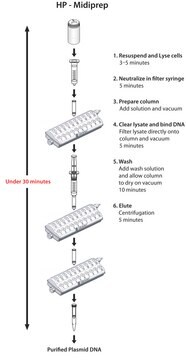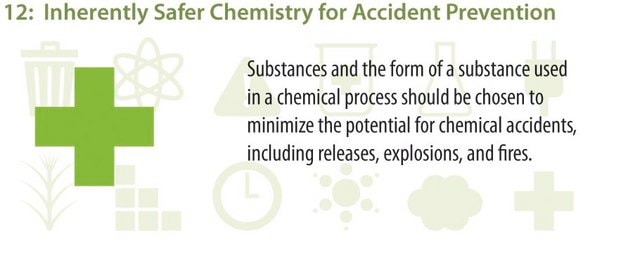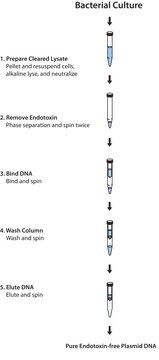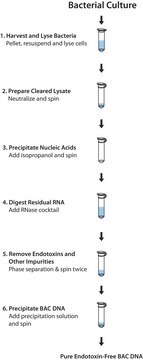03143414001
Roche
Genopure Plasmid Midi Kit
kit of for 20 isolations from 5 to 30 ml
Synonym(e):
plasmid isolation
Anmeldenzur Ansicht organisationsspezifischer und vertraglich vereinbarter Preise
Alle Fotos(4)
About This Item
UNSPSC-Code:
41105500
Empfohlene Produkte
Verwandte Kategorien
Allgemeine Beschreibung
Plasmid recovery was tested with 50 μg purified plasmid. The recovery was >90%, with more than 80% in supercoiled form. The yield of plasmid DNA was determined by isolating pBS from DH5a cells. From 30 mL culture volume with a density of A600 between 3 and 6, >85 μg of plasmid DNA was obtained.
The purity (checked by the ratio of A260/A280) is 1.8 + 0.2.
No RNA is detectable.
The kit components have been tested for the absence of nucleases according to current quality control procedures.
The purity (checked by the ratio of A260/A280) is 1.8 + 0.2.
No RNA is detectable.
The kit components have been tested for the absence of nucleases according to current quality control procedures.
Anwendung
The Genopure Plasmid Midi Kit prepares transfection-grade plasmid DNA in medium quantities (up to 100 μg plasmid) from bacterial cultures. Isolated plasmid is suitable for most molecular biology applications:
- Transfection
- Southern blotting
- Sequencing
- PCR
- Restriction analysis
- Cloning
Leistungsmerkmale und Vorteile
The Genopure Plasmid Midi Kit prepares highly purified plasmid DNA in medium quantities using a modified alkaline lysis method.
- Save time with ready-to-use reagents.
- Purify all sizes and types of plasmid,
- Process multiple samples in parallel
- Eliminate the use of hazardous organic compounds
- Obtain higher purity plasmid DNA
Komponenten
- Suspension Buffer
- RNase A
- Lysis Buffer
- Neutralization Buffer
- Equilibration Buffer
- Wash Buffer
- Elution Buffer,
- NucleoBond AX 100 Columns
- Folded Filters (150 mm diameter)
- Sealing Rings
Qualität
Plasmid DNA purified by this kit has been tested for restriction digestion; pUC 19 was isolated from transformed HB101 as described in the protocol. 1 μg of plasmid was completely digested with 1 U Msp I for 2 hours at +37°C, as shown by agarose gel analysis.
Plasmid recovery was tested with 50 μg purified plasmid. The recovery was >90%, with more than 80% in supercoiled form. The yield of plasmid DNA was determined by isolating pBS from DH5a cells. From 30 ml culture volume with a density of A600 between 3 and 6, >85 μg of plasmid DNA was obtained.
The purity (checked by the ratio of A260/A280) is 1.8 + 0.2.
RNA contamination was analyzed with 3 μg pBS purified with the standard procedure and checked by electrophoresis on an agarose gel. No RNA was detected.
The kit components have been tested for the absence of nucleases according to current Quality Control procedures.
Plasmid recovery was tested with 50 μg purified plasmid. The recovery was >90%, with more than 80% in supercoiled form. The yield of plasmid DNA was determined by isolating pBS from DH5a cells. From 30 ml culture volume with a density of A600 between 3 and 6, >85 μg of plasmid DNA was obtained.
The purity (checked by the ratio of A260/A280) is 1.8 + 0.2.
RNA contamination was analyzed with 3 μg pBS purified with the standard procedure and checked by electrophoresis on an agarose gel. No RNA was detected.
The kit components have been tested for the absence of nucleases according to current Quality Control procedures.
Angaben zur Herstellung
The isolation procedure is based on a modified alkaline lysis protocol and can be divided into the following steps:The bacteria are partially lysed, allowing the plasmid DNA to escape the cell wall into the supernatant. The larger E. coli chromosomal DNA is trapped in the cell wall. The lysate is cleared of cellular debris by filtration or centrifugation, and the plasmid DNA-containing fraction is loaded onto a pre-equilibrated column. Since the cleared lysate is applied to the column in a low-salt buffer, plasmid DNA binds to the macroporous anion-exchange material in the column. Cellular impurities are eluted from the column with a high-salt wash. Finally, the plasmid DNA is eluted from the column. Recovered DNA is precipitated from the eluate to remove salt and concentrate the plasmid.
Hinweis zur Analyse
Sample:
E. coli culture that contains a high-copy number plasmid: 5 to 30 mL bacterial culture
E. coli culture that contains a low-copy number plasmid: 10 to 100 mL bacterial culture
Plasmid Size: The isolation procedure is suitable for all sizes of plasmid. Note: Lysates of larger constructs (up to 100 kb) should be cleared by filtration rather than centrifugation to avoid shearing the plasmid.
Time Required: 60 minutes (including filtration of the lysate)
Typical Yield:
High-copy number plasmid: 3 to 5 μg/mL culture
Low-copy number plasmid: 0.2 to 1 μg/mL culture
Product Purity: Isolated plasmid DNA is free of other bacterial components, including RNA.
E. coli culture that contains a high-copy number plasmid: 5 to 30 mL bacterial culture
E. coli culture that contains a low-copy number plasmid: 10 to 100 mL bacterial culture
Plasmid Size: The isolation procedure is suitable for all sizes of plasmid. Note: Lysates of larger constructs (up to 100 kb) should be cleared by filtration rather than centrifugation to avoid shearing the plasmid.
Time Required: 60 minutes (including filtration of the lysate)
Typical Yield:
High-copy number plasmid: 3 to 5 μg/mL culture
Low-copy number plasmid: 0.2 to 1 μg/mL culture
Product Purity: Isolated plasmid DNA is free of other bacterial components, including RNA.
Sonstige Hinweise
For life science research only. Not for use in diagnostic procedures.
Signalwort
Danger
H-Sätze
Gefahreneinstufungen
Eye Dam. 1 - Flam. Liq. 3 - Met. Corr. 1 - Skin Corr. 1
Lagerklassenschlüssel
3 - Flammable liquids
WGK
WGK 1
Flammpunkt (°F)
100.4 °F
Flammpunkt (°C)
38 °C
Analysenzertifikate (COA)
Suchen Sie nach Analysenzertifikate (COA), indem Sie die Lot-/Chargennummer des Produkts eingeben. Lot- und Chargennummern sind auf dem Produktetikett hinter den Wörtern ‘Lot’ oder ‘Batch’ (Lot oder Charge) zu finden.
Besitzen Sie dieses Produkt bereits?
In der Dokumentenbibliothek finden Sie die Dokumentation zu den Produkten, die Sie kürzlich erworben haben.
Unser Team von Wissenschaftlern verfügt über Erfahrung in allen Forschungsbereichen einschließlich Life Science, Materialwissenschaften, chemischer Synthese, Chromatographie, Analytik und vielen mehr..
Setzen Sie sich mit dem technischen Dienst in Verbindung.







